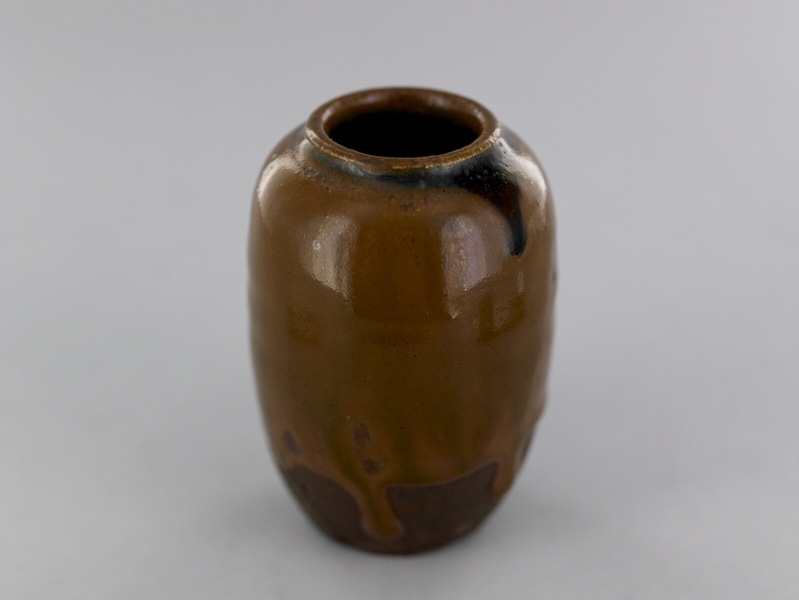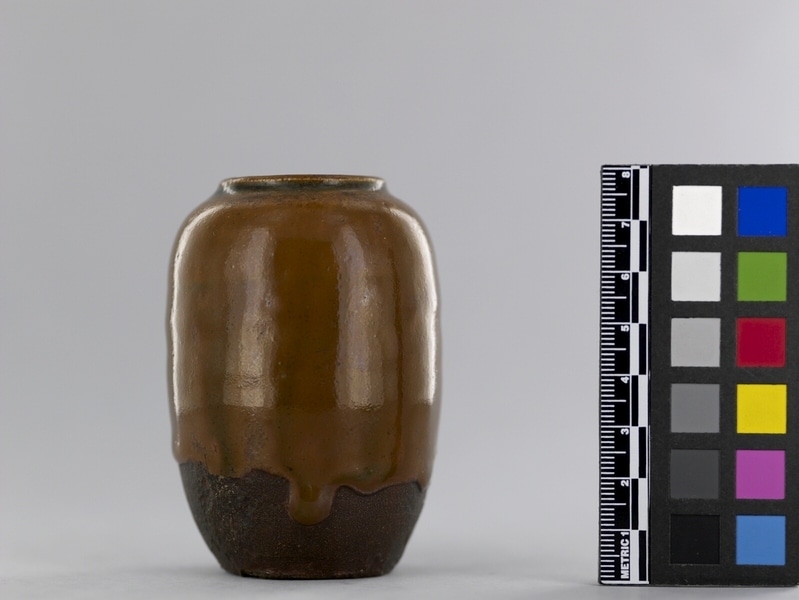Tea Container Item Number: Ed5.3160 from the MOA: University of British Columbia


Description
Seto ware ceramic tea caddy (without its lid). Cylindrical form curving gently inward at base, and more sharply at shoulder minimal neck, rounded lip. Flat, unglazed base showing dark brown body. Thick opaque coffee-coloured glaze, thinning slightly over lip, pools into a dark brown-black ring which ends below lip in an iridescent streak falling over the shoulder.
History Of Use
Called chaire (茶入れ), this is a type of tea caddy used for storing concentrated think green powdered tea to serve koicha (濃茶; “thick tea”) in a traditional form of the Japanese tea ceremony known as sadō or chadō (茶道; the way of tea) and chanoyu (茶の湯). This elaborate ritual became an important part of Japan’s social fabric early in the 16th century, and is a choregraphed way of preparing and serving tea. Koicha is served at a chaji (a more formal tea ceremony than a chakai). Seto ware (瀬戸焼, Seto-yaki) was produced under the auspices of the Owari clan.
Narrative
Ed5.3160-64 (five ceramic tea caddies) were purchased from Sotheby's, NY, in 1982. The containers each had an ivory lid, however the lids were seized at the border due to the ban on the export and import of material derived from endangered species (CITES).
Item History
What
Who
- Culture
- Japanese
- Previous Owner
- Sotheby's
- Received from
- Fyfe-Smith Memorial Oriental Collection Fund (Funding source) and Sotheby's (Seller)
Where
- Holding Institution
- MOA: University of British Columbia
- Made in
- Nagoya, Aichi, Japan
When
- Creation Date
- between 1700 and 1800
- Ownership Date
- before August 27, 1982
- Acquisition Date
- on August 27, 1982
Other
- Item Classes
- ceramics
- Condition
- good
- Current Location
- Case 78
- Accession Number
- 0845/0001